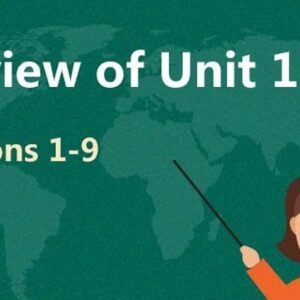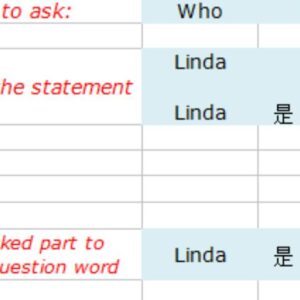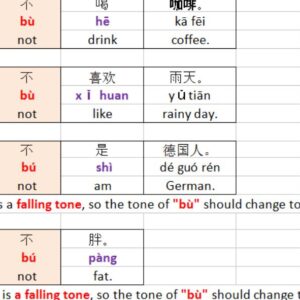Among the conveniences of Chinese grammar is the simple as well as logical sentence patterns.
And luckily, much of them are based upon the formula you currently recognize.
Ah, the ever-so-basic however ever-so-reliable SVO pattern.
Below are 5 actually straightforward Chinese syntax to develop your Mandarin language abilities.
1. Subject + Verb + (Object)

Example: He plays ball.
- He, 他 tā (This is the subject.)
- Play, 打 dǎ, 玩 wán (This is the verb.)
- Ball, 球 qiú (This is the object.)
The word “play” in Chinese can be translated to 打 dǎ or 玩 wán. When speaking “playing ball,” we use “打 dǎ,” which literally means “to hit.”
So the correct order will be,
他 (S) + 打 (V) + 球(O)。 Tā dǎ qiú.
He plays ball.
As the foundation of the rest of the structures in the post, this pattern needs no introduction or explanation.
Let’s take a look at an example of an SVO sentence in Chinese:
- 你吃肉。
(nǐ chī ròu.)
You eat meat.
Like in English, sentences can also simply be composed of just a subject and a verb.
- 你吃。
(nǐ chī.)
You eat.
Here are other examples of SV(O) sentences:
- 妈妈工作。
(mā ma gōng zuò.)
Mom works. - 他们教书。
(tā men jiāo shū.)
They (all male or mixed gender) teach. - 她学习拉丁语。
(tā xué xí lā dīng yǔ.)
She studies Latin. - 小男孩读漫画书。
(xiǎo nán hái dú màn huà shū.)
The little boy reads comic books.
2. Subject + Verb + (Object) + 吗?
Okay, now it’s time to build up from the SV(O) word order.
As you can see, 吗 (ma) is a particle that turns statements into yes/no questions.
So when 吗 is tacked on the end of an SV(O) statement, it turns the sentence into a “Do/Does” question.
Building on the examples from earlier, here’s a question without an object:
- 你吃吗?
(nǐ chī ma?)
lit. You eat?
Do you eat?
Then here’s what the question would look like with an object:
- 你吃肉吗?
(nǐ chī ròu ma?)
lit. You eat meat?
Do you eat meat?
Here are more examples of this pattern:
- 妈妈工作吗
(mā ma gōng zuò ma?)
Does Mom work? - 他们教书吗?
(tā men jiāo shū ma?)
Do they teach? - 她学习拉丁语吗?
(tā xué xí lā dīng yǔ ma?)
Does she study Latin? - 小男孩读漫画书吗?
(xiǎo nán hái dú màn huà shū ma?)
Does the little boy read comic books?
3.“Time” in Chinese sentence structure: Subject + Time + Verb + (Object)

- Subject + Time when + Verb + Object
or
- Time when + Subject + Verb + Object
Let’s use the same example from above:
- He plays ball at 4 this afternoon.
- 4 o’clock this afternoon is the “time when.” It can be placed either right before, or right after, the subject.
- To apply the sentence structure Subject + Time when + Verb + Object,
- the order will be:
He + today afternoon 4 o’clock + plays + ball.
他今天 下午 四点 打球。
Tā jīntiān xiàwǔ sì diǎn dǎ qiú.
If you want to add a time when an action occurs, you need to place that information in between the subject and the verb.
Without an object:
你周一吃。
(nǐ zhōu yī chī.)
lit. You Monday eat.
You eat on Monday(s).
With an object:
你周一吃肉。
(nǐ zhōu yī chī ròu.)
lit. You Monday eat meat.
You eat meat on Monday(s).
Other examples:
妈妈星期六工作。
(mā ma xīng qī liù gōng zuò.)
Mom works on Saturday(s).
他们每年教书。
(tā men měi nián jiāo shū.)
They teach every year.
她早上学习拉丁语。
(tā zǎo shang xué xí lā dīng yǔ.)
She studies Latin in the morning.
小男孩晚上看漫画书。
(xiǎo nán hái wǎn shàng kàn màn huà shū.)
The little boy reads comic books at night.
4.“Location” in Chinese sentence structure: Subject + Time + 在 Location + Verb + (Object)

Example,
He plays ball at the gym, in the school, at 4 this afternoon.
Let’s take a close look at the location information here. There are two location words:
- Gym
- School
Let’s arrange them in the correct order in Chinese grammar:
- School (a bigger location) and
- Gym (a smaller location which is inside the school)
School: 学校 xuéxiào
Gym: 运动场 tyùndòngchǎng
So, the correct order in Chinese will be:
He + today afternoon 4 o’clock + in the school at the gym + play + ball.
他今天下午四点 在学校 运动场 打球。
Tā jīntiān xiàwǔ sì diǎn zài xuéxiào yùndòngchǎng dǎ qiú.
在 (zài) has several meanings, but in Chinese SVO sentences, it’s translated as “at” to indicate the location.
在 + location
So if you wanted to say, “at the restaurant,” it would be 在餐厅 (zài cān tīng). Then this little detail would need to be placed in between the time and verb.
Without an object:
你周一在餐厅吃。
(nǐ zhōu yī zài cān tīng chī.)
lit. You Monday at restaurant eat.
You eat at the restaurant on Monday(s).
With an object:
你周一在餐厅吃肉。
(nǐ zhōu yī zài cān tīng chī ròu.)
lit. You Monday at restaurant eat meat.
You eat meat at the restaurant on Monday(s).
Other examples:
妈妈星期六在沙龙工作。
(mā ma xīng qī liù zài shā lóng gōng zuò.)
Mom works at the salon on Saturday(s).
他们每年在大学教书。
(tā men měi nián zài dà xué jiāo shū.)
They teach at the university every year.
她早上在图书馆学习拉丁语。
(tā zǎo shang zài tú shū guǎn xué xí lā dīng yǔ.)
She studies Latin in the morning at the library.
小男孩晚上在床上看漫画书。
(xiǎo nán hái wǎn shang zài chuáng shàng kàn màn huà shū.)
The little boy reads comic books at night in bed.
Do note that there are some exceptions to this structure.
There are some verbs where the location would be placed after them instead of before. These include:
住 (zhù) — to live
走 (zǒu) — to walk
坐 (zuò) — to sit
These sentences normally don’t include an object, so the pattern here would be Subject + Time + Verb + Location.
我们住在上海。
(wǒ men zhù zài shàng hǎi.)
We live in Shanghai.
他们今天下午走到了路的尽头。
(tā men jīn tiān xià wǔ zǒu dào le lù de jìn tóu)
They walked to the end of the road this afternoon.
我的猫在晚餐时间坐在椅子上。
(wǒ de māo zài wǎn cān shí jiān zuò zài yǐ zi shàng.)
My cat sits on the chair at dinnertime.
Thankfully, most verbs follow the Subject + Time + 在 Location + Verb + (Object) word order, so you don’t have to memorize a long list of exceptions.
5.“Time Duration” in Chinese sentence structure

Subject + Time + 在 Location + Verb + (Object) + Duration + (Object)
Example:
He played ball for three hours at the gym, in the school, this afternoon.
So, the correct order in Chinese will be:
He + today afternoon + in the school at the gym + played + ball + for three hours
他 今天下午 在学校运动场 *打球打了 三个小时。
Tā jīntiān xiàwǔ zài xuéxiào yùndòngchǎng dǎqiú dǎle sān gè xiǎoshí.
*In Chinese, when adding time duration, the verb sometimes, not all the time, repeats before the time duration. So, the whole sentence structure will look like this:
Subject + time when (from big to small) + location (from big to small) + verb + object + (verb) + (了) + time duration.
The very last detail we’re going to include in our basic Chinese sentence structures is duration.
Duration refers to a more specific length of time when the action occurs.
In other words, it’s basically indicating how long the action goes on during the given timeframe.
Without an object:
你周一在餐厅吃三个小时。
(nǐ zhōu yī zài cān tīng chī sān gè xiǎo shí.)
lit. You Monday at restaurant eat three hours.
You eat at the restaurant on Monday(s) for three hours.
If the sentence comes with an object, it can be placed right after the verb or after the duration.
你周一在餐厅吃肉三个小时。
(nǐ zhōu yī zài cān tīng chī ròu sān gè xiǎo shí.)
lit. You Monday at restaurant eat meat three hours.
You eat meat at the restaurant on Monday(s) for three hours.
你周一在餐厅吃三个小时肉。
(nǐ zhōu yī zài cān tīng chī sān gè xiǎo shí ròu.)
lit. You Monday at restaurant eat three hours meat.
You eat meat at the restaurant on Monday(s) for three hours.
Other examples:
妈妈星期六在沙龙工作半天。
(mā ma xīng qī liù zài shā lóng gōng zuò bàn tiān.)
Mom works at the salon on Saturday(s) for half the day.
他们每年在大学任教几个月。
(tā men měi nián zài dà xué rèn jiào jǐ gè yuè.)
They teach at the university every year for several months.
她早上在图书馆学习拉丁语一个小时。
(tā zǎo shang zài tú shū guǎn xué xí lā dīng yǔ yì gè xiǎo shí.)
She studies Latin in the morning at the library for one hour.
小男孩晚上在床上读三十分钟漫画书。
(xiǎo nán hái wǎn shang zài chuáng shàng dú sān shí fēn zhōng màn huà shū.)
The little boy reads comic books at night in bed for 30 minutes.
I hope that you’ve discovered this blog post useful in starting to comprehend Chinese grammar, as well as obtaining some Chinese sentence structure practice.
And when you’re ready for brand-new as well as extra difficult sentence patterns, I have actually some recommended resources listed below.




